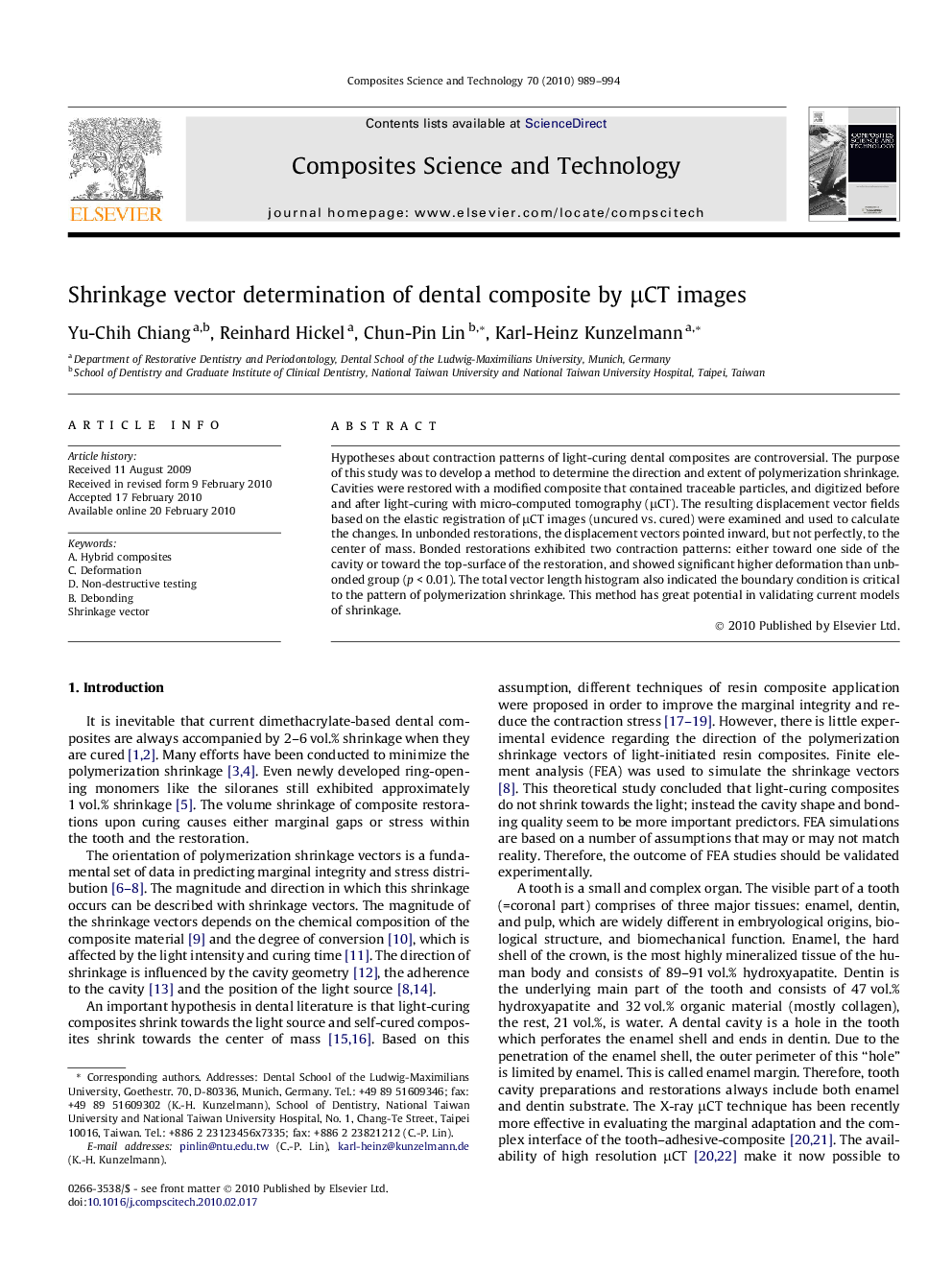| Article ID | Journal | Published Year | Pages | File Type |
|---|---|---|---|---|
| 821245 | Composites Science and Technology | 2010 | 6 Pages |
Hypotheses about contraction patterns of light-curing dental composites are controversial. The purpose of this study was to develop a method to determine the direction and extent of polymerization shrinkage. Cavities were restored with a modified composite that contained traceable particles, and digitized before and after light-curing with micro-computed tomography (μCT). The resulting displacement vector fields based on the elastic registration of μCT images (uncured vs. cured) were examined and used to calculate the changes. In unbonded restorations, the displacement vectors pointed inward, but not perfectly, to the center of mass. Bonded restorations exhibited two contraction patterns: either toward one side of the cavity or toward the top-surface of the restoration, and showed significant higher deformation than unbonded group (p < 0.01). The total vector length histogram also indicated the boundary condition is critical to the pattern of polymerization shrinkage. This method has great potential in validating current models of shrinkage.
